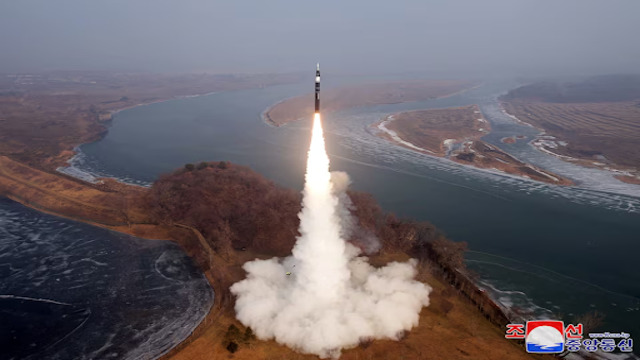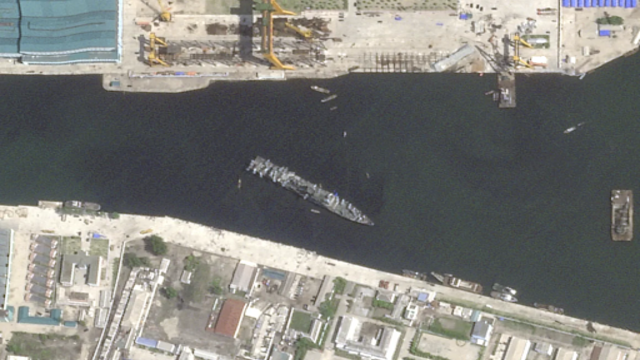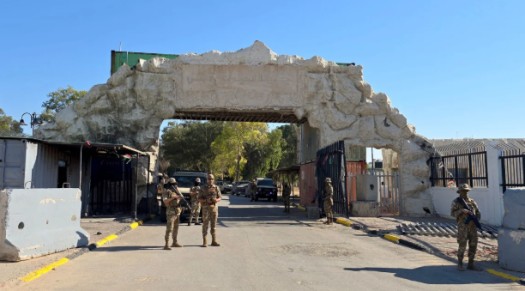
North Korea's state media, KCNA, released a photo on January 7, 2025, showing a missile launched during a test of a new intermediate-range hypersonic ballistic missile. The test took place at an undisclosed location on January 6, 2025. Reuters
North Korea has successfully tested a new intermediate-range hypersonic ballistic missile (IRBM), a move that highlights the country’s push to enhance its nuclear and missile capabilities. The test was overseen by North Korean leader Kim Jong Un and took place on Monday, with state media KCNA reporting the launch on Tuesday. This missile test marks the first launch since November 5, signaling a continued focus on military development.
The timing of the launch was notable, as it coincided with U.S. Secretary of State Antony Blinken’s visit to South Korea. During his trip, Blinken reaffirmed the importance of bilateral and trilateral cooperation with Japan, emphasizing a collective response to North Korea’s growing military threats. This missile test further underscores the escalating tensions between North Korea and its neighbors, particularly as North Korea seeks to enhance its deterrence capabilities.
The missile, which was fired from the outskirts of Pyongyang, reportedly traveled 1,500 kilometers (932 miles) at speeds 12 times the speed of sound. It reached an altitude of nearly 100 kilometers before descending to a secondary peak of 42.5 kilometers and then accurately landing on a target off the eastern coast. However, South Korea’s military expressed skepticism regarding North Korea's claims, estimating the missile's range to be closer to 1,100 kilometers and noting that there was no detection of the "second peak" as described by KCNA.
A key feature of the missile’s design is the use of new carbon fiber composite materials in its engine section. Carbon fiber is both lighter and stronger than traditional aerospace materials like aluminum, offering potential advantages in terms of missile performance. According to KCNA, these materials make the missile more difficult to track and more capable of penetrating dense defense systems, increasing its military effectiveness.
Kim Jong Un praised the missile as a crucial asset for protecting North Korea against what he called hostile security threats. The North Korean leader emphasized that the development of such advanced weaponry is part of the country’s ongoing efforts to strengthen its nuclear deterrent. Photographs released by KCNA show Kim overseeing the test via teleconference with his daughter present, further indicating the personal importance of the missile’s development to the North Korean leader.
The missile test also comes amid concerns over North Korea’s increasing cooperation with Russia, particularly in the areas of space and satellite technology. South Korean Foreign Minister Cho Tae-yul condemned the missile launch, echoing Blinken’s concerns about North Korea’s military advancements. These developments are part of a broader trend in North Korea’s military strategy, which includes efforts to develop solid-fuel IRBMs that are harder to detect and intercept.
The recent missile test is seen as an extension of last year’s hypersonic missile tests, which featured a solid-fuel design and included a hypersonic glide vehicle, a warhead capable of evading missile defenses. As tensions continue to rise on the Korean Peninsula, both North and South Korea are closely monitoring these developments, with continued analysis and collaboration with the United States to assess the missile's capabilities and potential threats.















